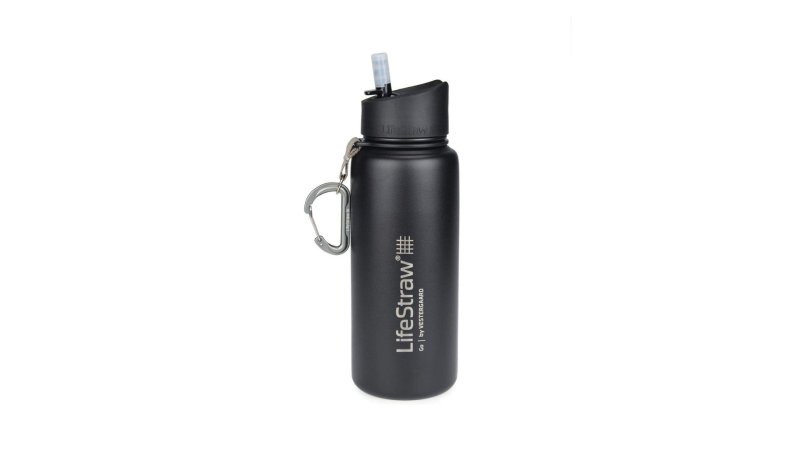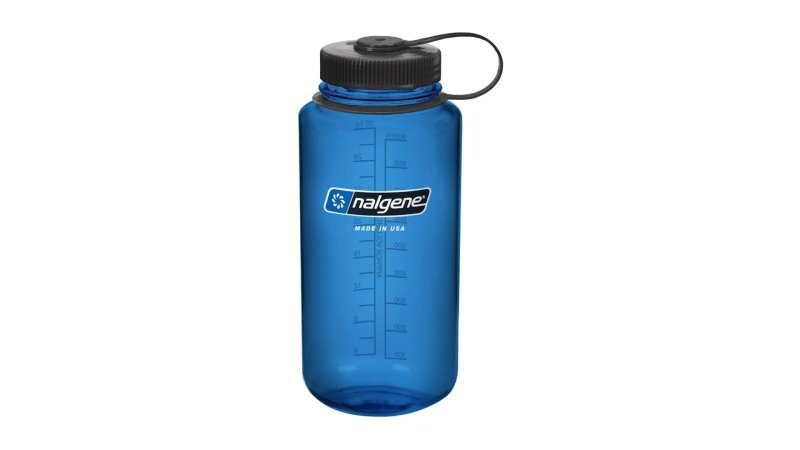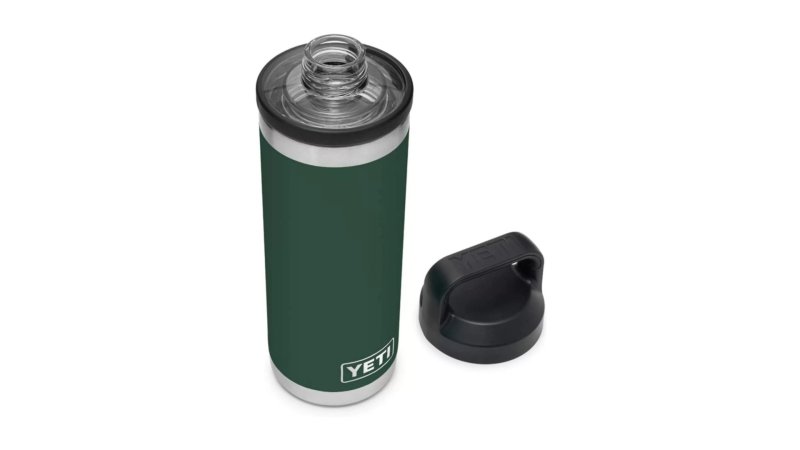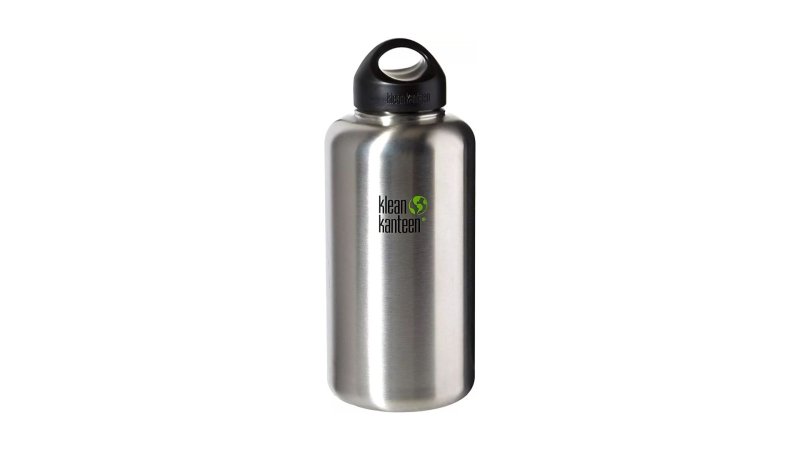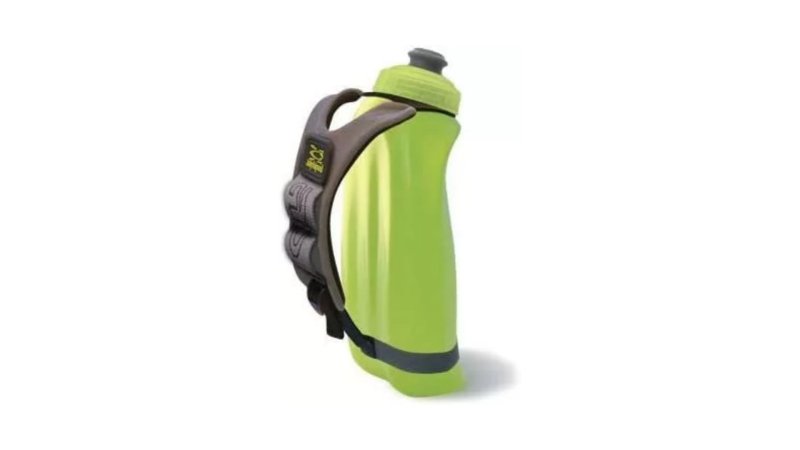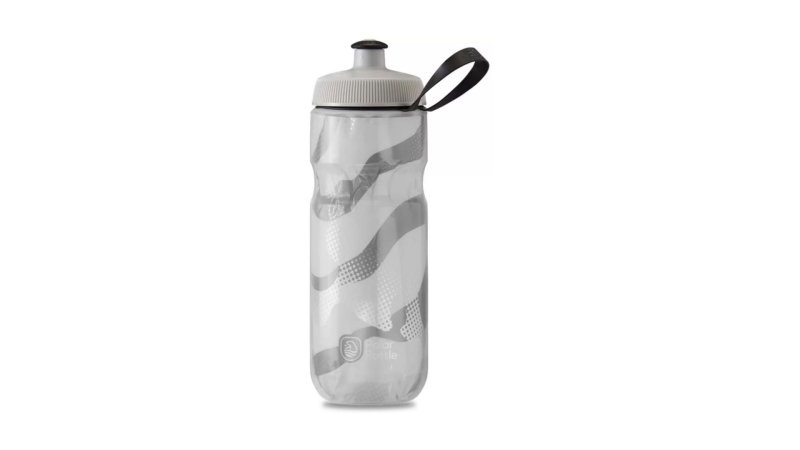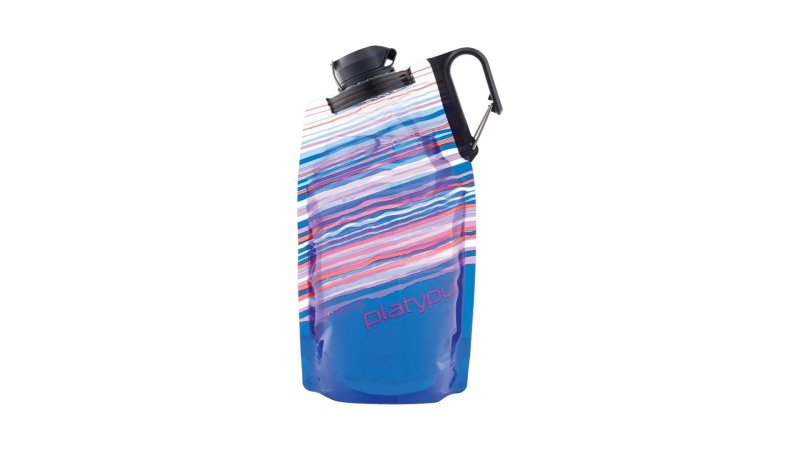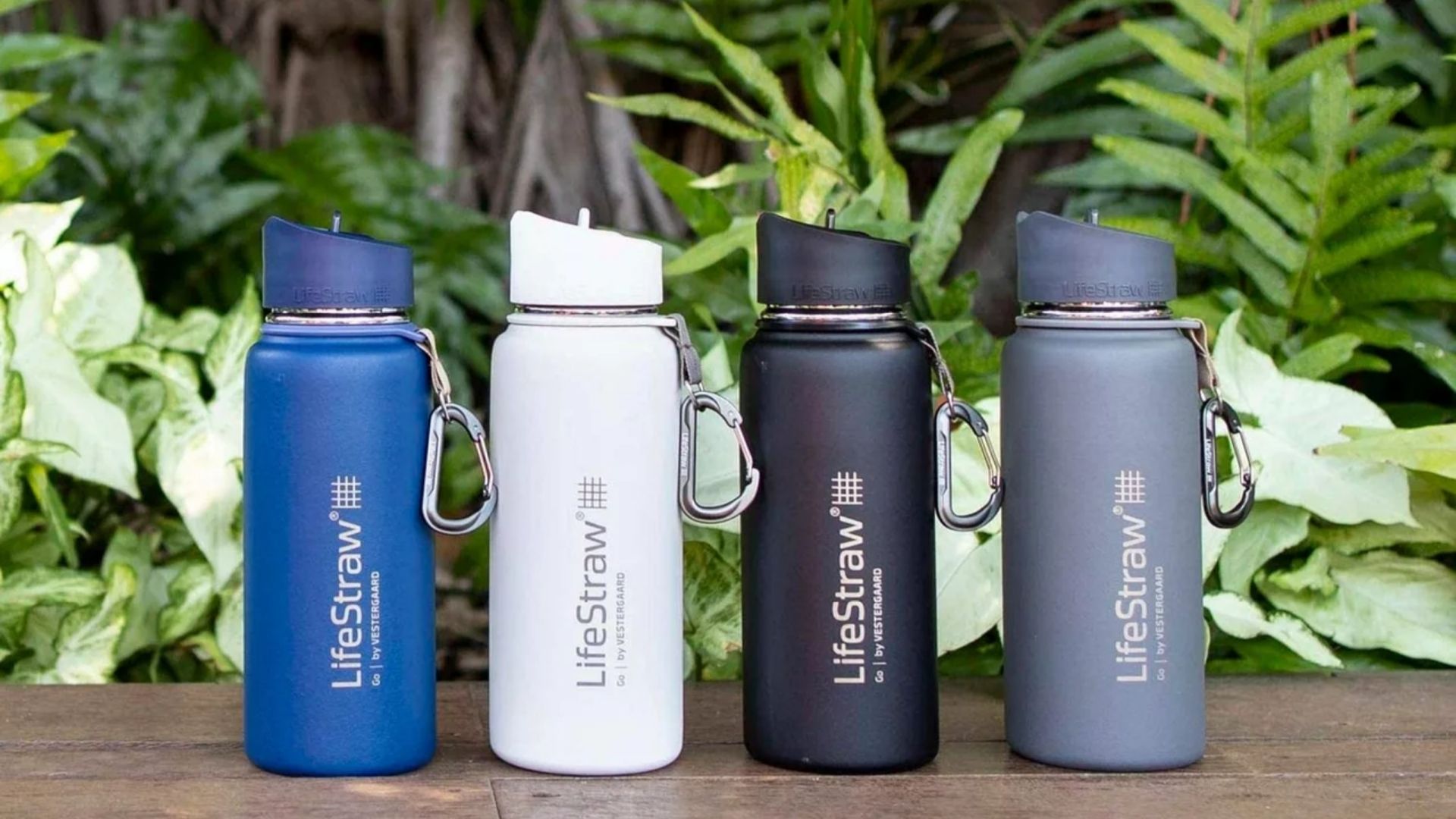

We may earn revenue from the products available on this page and participate in affiliate programs.
We get it — even the best water bottle reviews can get monotonous. If it’s water-tight and has a lid, what more is there to say? That approach might be good enough for some people, but we actually give a shit about your paycheck and want to make sure the gear you buy on our word is worth the cost.
Instead of being dazzled by social media marketing campaigns and flashy colors, we dug deeper to find water bottles that actually add value. After all, the best camping water bottle and the best cycling water bottle are two very different things. There are times and places for stainless steel and plastic, so we included both. Part of the reasoning behind buying a reusable water bottle is to reduce our environmental impact, so we prioritized companies that take that responsibility seriously.
A fair amount of market research went into this gear guide, but the top picks went to products I’ve personally used and trust with my health. You can be sure that every water bottle you see here is one I’d trust during a field exercise, extended backcountry trip, or day on the trails.
- Best Overall: Lifestraw Go Stainless Steel Water Bottle
- Best Value: Nalgene Wide-Mouth Bottle
- Honorable Mention: Yeti Rambler 18
- Best Eco Pick: Klean Kanteen Wide-Mouth Water Bottle
- Best for Running: Amphipod Hydraform Ergo Minimalist
- Best for Cycling: Polar Bottle Insulated Sport
- Best Collapsible: Platypus DuoLock SoftBottle
Our methodology
In many cases, our recommendations are based on personal experience. The picks for best water bottle overall, best value, and honorable mention are all products I’ve personally used extensively. My Nalgene has been in use for more than a decade. For the rest, I turned to the expertise of people I know and crowdsourced some wisdom from the online community of real-world owners. All the products here are BPA-free, durable enough for hard use in the field, and a hell of a lot better than using disposable water bottles.
Best Overall
Lifestraw Go Stainless Steel Water Bottle
Pros
- Two layers of stainless steel create efficient vacuum insulation
- Built-in filter removes most bacteria, parasites, and contaminants
- Refill in seconds from a tap or natural source
Cons
- Not to be used for boiling water
- Water filter reduces capacity
Specs
- Material: Stainless steel
- Size: 24 ounces
- Cap style: Straw
Best Value
Nalgene Wide-Mouth Bottle
Pros
- Tritan is famously durable and looks better with battle scars
- Wide mouth makes it easy to add ice and wash
- Probably the most widely-used water bottle to date
Cons
- All plastic water bottles will eventually smell bad
- Not to be used to boil water
Specs
- Material: Tritan
- Size: 32 ounces
- Cap style: Open-top
Honorable Mention
Yeti Rambler 18
Pros
- Vacuum-insulated and built from stainless steel
- Powder coating is extremely durable
- Dishwasher-safe and easy to clean by hand
Cons
- Limited capacity (larger Ramblers are available)
- One of the most expensive water bottles here
Specs
- Material: Stainless steel
- Size: 18 ounces
- Cap style: Open-top
Best Eco Pick
Klean Kanteen Wide-Mouth Water Bottle
Pros
- Single-walled stainless steel bottle can be used to boil water
- Capable of holding 40 ounces of water Ideal for
- long-term survival and emergency preparedness
Cons
- Too large for casual hiking or daily use
- Fairly expensive for a non-insulated water bottle
Specs
- Material: Stainless steel
- Size: 40 ounces
- Cap style: Open-top
Best for Running
Amphipod Hydraform Ergo Minimalist
Pros
- Lightweight and ergonomic with a strap for handheld use
- Squeezable for quick sips
- More compact and affordable than a hydration bladder
Cons
- A hydration bladder is still better for endurance training
- Occupies one hand for the entire run
Specs
- Material: Plastic
- Size: 16 ounces
- Cap style: Jett-Lock pop-up nozzle
Best for Cycling
Polar Bottle Insulated Sport
Pros
- Fits standard bottle cages
- Insulated to keep your water cool during long rides
- Easy to use one-handed
Cons
- Probably more expensive than your average cycling bottle
- Might be oversized for shorter rides
Specs
- Material: Plastic
- Size: 20 ounces
- Cap style: Pop-up nozzle
Best Collapsible
Platypus DuoLock SoftBottle
Pros
- Super portable and great for travel
- Integrated carabiner for hands-free carry
- Locking cap can be removed for easy filling
Cons
- Collapsible water bottles don’t last as long as traditional ones
- Not compatible with common screw-on filters
Specs
- Material: Plastic
- Size: 1 liter
- Cap style: Flip-top
Our verdict on water bottles
In the vast majority of circumstances, the LifeStraw Go is as good as it gets. It’s made from durable stainless steel, is vacuum-insulated to stay cold, and it filters out harmful bacteria as you drink. It also costs several times more than the other option on this list. If you want to save money, you’ll be in good hands with the tried and true Nalgene bottle.
Is there something we missed? Share the wealth and leave your favorite water bottle in the comments section.
What to consider when buying a water bottle
Manufacturers have gone deep down the rabbit hole of making specialized water bottles. Even though that would have sounded crazy a few years ago, the reality is that you can genuinely get water bottles that are great at different things. What a time to be alive.
Types of water bottles
Plastic water bottles vs. stainless steel water bottles
Your first decision should be based on the material your next water bottle is made from. Old-school plastic bottles still have their place, although the chemical composition has been improved to eliminate harmful chemicals. Thin, pliable plastic water bottles are great for running and cycling because they can be squeezed to deliver a large volume of water through a small nozzle in a controlled manner. More advanced options, like those from Nalgene, use Tritan to achieve tremendous durability without adding weight.
If you want the strongest water bottle possible, stainless steel is for you. This metal is famously easy to sterilize, so you can get fresh drinking water every time. If you do choose to fill your stainless steel water bottle with coffee or juice, it’s unlikely to absorb the flavor and pass it on to your next drink. Stainless steel can also be exposed to extreme heat safely (as long as it’s a single-wall, non-insulated design), so it’s a great option for people who may need to boil water to remove dangerous parasites and bacteria. The downside of stainless steel water bottles is extra weight and cost, though the pros generally outweigh the cons.
Insulated water bottles
An insulated water bottle is one of the biggest upgrades you can make to your gear. The good news is that insulating a water bottle isn’t overly expensive, so you can keep your water at just the right temperature without breaking the bank.
Air is the best insulation, so the best insulated water bottles use an inner and outer barrier instead of physical insulation. Inexpensive plastic water bottles keep water in an internal pouch that can keep temperatures down for a few hours. Stainless steel insulated water bottles use a sealed vacuum to create longer-lasting temperature control.
Filtered water bottles
Unfiltered water bottles are fine for the daily grind when you have unlimited access to clean drinking water. Field exercises, deployments, camping trips, and survival scenarios call for something better.
Filtered water bottles take the risk out of staying hydrated by cleaning water as you drink it, rather than purifying it as it’s collected like a camping water filter. They eliminate the need to spend precious time filling a gravity-fed water filtration system or calories expended operating a pump. They’re also easier to fill than a hydration bladder, although hydration bladders are more convenient to drink from on the go. The best filters can purify huge amounts of water, so they don’t need to be replaced very often. Just remember to sterilize your bottle if you plan on using it without a filter.
Water bottle pricing
Most of the water bottles we found cost between $10 and $15. Some of the more premium offerings from brands like Yeti and Lifestraw cost more because of advanced features like vacuum insulation and water filtration. The most expensive pick on this list, the stainless steel and filtered LifeStraw Go, costs $60.
FAQs about water bottles
You’ve got questions, Task & Purpose has answers.
Q: What is the healthiest water bottle to use?
A: The healthiest water bottle is a clean one. If you’re really concerned about contaminants in your water, a stainless steel bottle with a clean, high-quality filter is your best bet.
Q: Are stainless steel bottles better than plastic?
A: Stainless steel water bottles are easier to clean and almost always more durable than plastic ones. They do tend to be heavier, though.
Q: How long do metal water bottles last?
A: A stainless steel water bottle should last as long as you’re willing to take care of it. They’re extremely durable.
Q: Can you refrigerate stainless steel water bottles?
A: Sure, just remember that insulated stainless steel water bottles will work against you if you’re trying to cool your drink down by putting it in the fridge. In that case, use another container or leave the lid open.
Q: Can you boil water in a water bottle?
A: Even though some plastic water bottles can hold boiling water, they shouldn’t be exposed to heat long enough to bring it to a boil. Dual-walled stainless steel water bottles will act as a barrier to heat and may explode. Only single-walled stainless steel bottles are safe for boiling water.
Q: How often should you change your water bottle?
A: Regular cleaning goes a long way, but even that can’t keep some water bottles in good shape forever. A good sniff will tell you when it’s time to say goodbye to your water bottle.
Q: Is it OK to put lemon in a stainless steel water bottle?
A: Sure, live your dream. Stainless steel does a great job of storing various flavors without absorbing them and passing them on.
